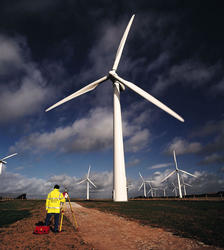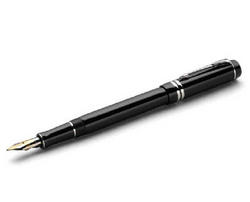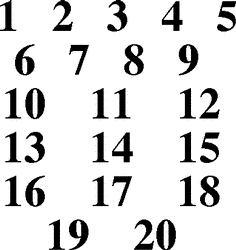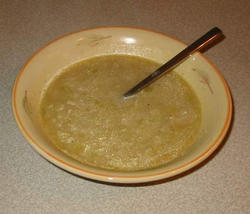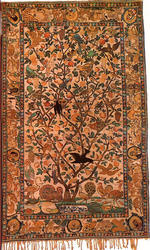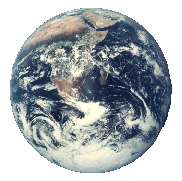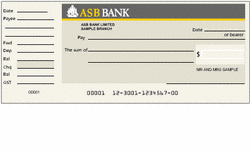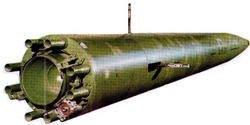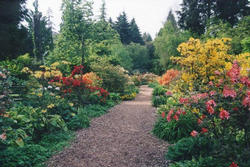Muslim Innovations - 2
Home
Islam & Terrorism
Muslim Innovation
The 14 Infallibles
Multimedia
Blog
Guantanamo Bay
Quran
What's New
What's New
What's New
What's New
www.islamicpropagation.faithweb.com
.
Windmill
The windmill was invented in 634 for a Persian caliph and was used
to grind corn and draw up water for irrigation. In the vast deserts
of Arabia, when the seasonal streams ran dry, the only source of
power was the wind which blew steadily from one direction for
months. Mills had six or 12 sails covered in fabric or palm leaves.
It was 500 years before the first windmill was seen in Europe.
to grind corn and draw up water for irrigation. In the vast deserts
of Arabia, when the seasonal streams ran dry, the only source of
power was the wind which blew steadily from one direction for
months. Mills had six or 12 sails covered in fabric or palm leaves.
It was 500 years before the first windmill was seen in Europe.
Vaccination
The technique of inoculation was not invented by Jenner and Pasteur
but was devised in the Muslim world and brought to Europe from
Turkey by the wife of the English ambassador to Istanbul in 1724.
Children in Turkey were vaccinated with cowpox to fight the deadly
smallpox at least 50 years before the West discovered it.
but was devised in the Muslim world and brought to Europe from
Turkey by the wife of the English ambassador to Istanbul in 1724.
Children in Turkey were vaccinated with cowpox to fight the deadly
smallpox at least 50 years before the West discovered it.
Fountain Pen
The fountain pen was invented for the Sultan of Egypt in 953 after
he demanded a pen which would not stain his hands or
clothes. It held ink in a reservoir and, as with modern pens, fed
ink to the nib by a combination of gravity and capillary action.
he demanded a pen which would not stain his hands or
clothes. It held ink in a reservoir and, as with modern pens, fed
ink to the nib by a combination of gravity and capillary action.
Numerical Numbering
The system of numbering in use all round the world is probably
Indian in origin but the style of the numerals is Arabic and first
appears in print in the work of the Muslim mathematicians
al-Khwarizmi and al-Kindi around 825. Algebra was named after
al-Khwarizmi's book, Al-Jabr wa-al-Muqabilah, much of whose contents are still in use. The work of Muslim maths scholars was imported
into Europe 300 years later by the Italian mathematician Fibonacci.
Algorithms and much of the theory of trigonometry came from the
Muslim world. And Al-Kindi's discovery of frequency analysis
rendered all the codes of the ancient world soluble and created the basis of modern cryptology.
Indian in origin but the style of the numerals is Arabic and first
appears in print in the work of the Muslim mathematicians
al-Khwarizmi and al-Kindi around 825. Algebra was named after
al-Khwarizmi's book, Al-Jabr wa-al-Muqabilah, much of whose contents are still in use. The work of Muslim maths scholars was imported
into Europe 300 years later by the Italian mathematician Fibonacci.
Algorithms and much of the theory of trigonometry came from the
Muslim world. And Al-Kindi's discovery of frequency analysis
rendered all the codes of the ancient world soluble and created the basis of modern cryptology.
Soup
Ali ibn Nafi, known by his nickname of Ziryab (Blackbird) came from
Iraq to Cordoba in the 9th century and brought with him the concept
of the three-course meal - soup, followed by fish or meat, then
fruit and nuts. He also introduced crystal glasses (which had been
invented after experiments with rock crystal by Abbas ibn Firnas ).
Carpet
Carpets were regarded as part of Paradise by
medieval Muslims, thanks to their advanced weaving techniques, new
tinctures from Islamic chemistry and highly developed sense of
pattern and arabesque which were the basis of Islam's
non-representational art. In contrast, Europe's floors were
distinctly earthly, not to say earthy, until Arabian and Persian
carpets were introduced. In England, as Erasmus recorded, floors
were "covered in rushes, occasionally renewed, but so imperfectly
that the bottom layer is left undisturbed, sometimes for 20 years,
harbouring expectoration, vomiting, the leakage of dogs and men, ale
droppings, scraps of fish, and other abominations not fit to be
mentioned". Carpets, unsurprisingly, caught on quickly.
medieval Muslims, thanks to their advanced weaving techniques, new
tinctures from Islamic chemistry and highly developed sense of
pattern and arabesque which were the basis of Islam's
non-representational art. In contrast, Europe's floors were
distinctly earthly, not to say earthy, until Arabian and Persian
carpets were introduced. In England, as Erasmus recorded, floors
were "covered in rushes, occasionally renewed, but so imperfectly
that the bottom layer is left undisturbed, sometimes for 20 years,
harbouring expectoration, vomiting, the leakage of dogs and men, ale
droppings, scraps of fish, and other abominations not fit to be
mentioned". Carpets, unsurprisingly, caught on quickly.
Earth is in Sphere shape?
By the 9th century, many Muslim scholars took it for granted that
the Earth was a sphere. The proof, said astronomer Ibn Hazm, "is
that the Sun is always vertical to a particular spot on Earth". It was 500 years before that realisation dawned on Galileo. The calculations of Muslim astronomers were so accurate that in the 9th century they
reckoned the Earth's circumference to be 40, 253.4km - less than
200km out. The scholar al-Idrisi took a globe depicting the world to
the court of King Roger of Sicily in 1139.
the Earth was a sphere. The proof, said astronomer Ibn Hazm, "is
that the Sun is always vertical to a particular spot on Earth". It was 500 years before that realisation dawned on Galileo. The calculations of Muslim astronomers were so accurate that in the 9th century they
reckoned the Earth's circumference to be 40, 253.4km - less than
200km out. The scholar al-Idrisi took a globe depicting the world to
the court of King Roger of Sicily in 1139.
Pay Cheques
The modern cheque comes from the Arabic saqq, a written vow to pay
for goods when they were delivered, to avoid money having to be
transported across dangerous terrain. In the 9th century, a Muslim
businessman could cash a cheque in China drawn on his bank in Baghdad.
for goods when they were delivered, to avoid money having to be
transported across dangerous terrain. In the 9th century, a Muslim
businessman could cash a cheque in China drawn on his bank in Baghdad.
Rocket & Torpedo
Though the Chinese invented saltpetre gunpowder, and used it in
their fireworks, it was the Arabs who worked out that it could be
purified using potassium nitrate for military use. Muslim incendiary
devices terrified the Crusaders. By the 15th century they had
invented both a rocket, which they called a "self-moving and
combusting egg", and a torpedo - a self-propelled pear-shaped bomb
with a spear at the front which impaled itself in enemy ships and
then blew up.
their fireworks, it was the Arabs who worked out that it could be
purified using potassium nitrate for military use. Muslim incendiary
devices terrified the Crusaders. By the 15th century they had
invented both a rocket, which they called a "self-moving and
combusting egg", and a torpedo - a self-propelled pear-shaped bomb
with a spear at the front which impaled itself in enemy ships and
then blew up.
Gardens
Medieval Europe had kitchen and herb gardens, but it was the Arabs
who developed the idea of the garden as a place of beauty and
meditation. The first royal pleasure gardens in Europe were opened
in 11th-century Muslim Spain. Flowers which originated in Muslim
gardens include the carnation and the tulip.
who developed the idea of the garden as a place of beauty and
meditation. The first royal pleasure gardens in Europe were opened
in 11th-century Muslim Spain. Flowers which originated in Muslim
gardens include the carnation and the tulip.
